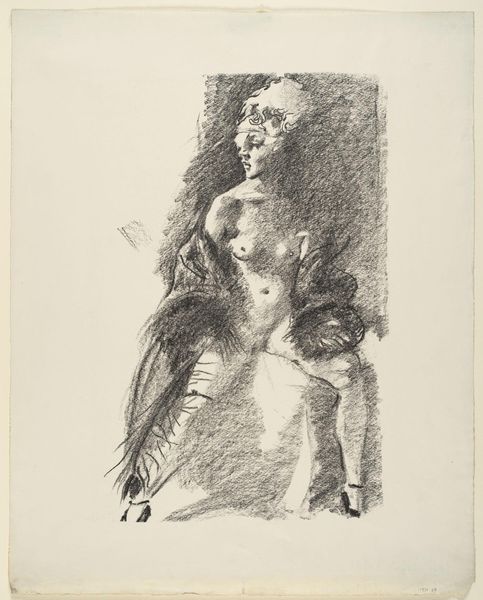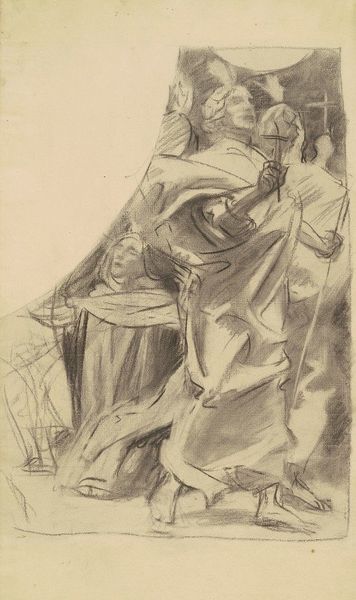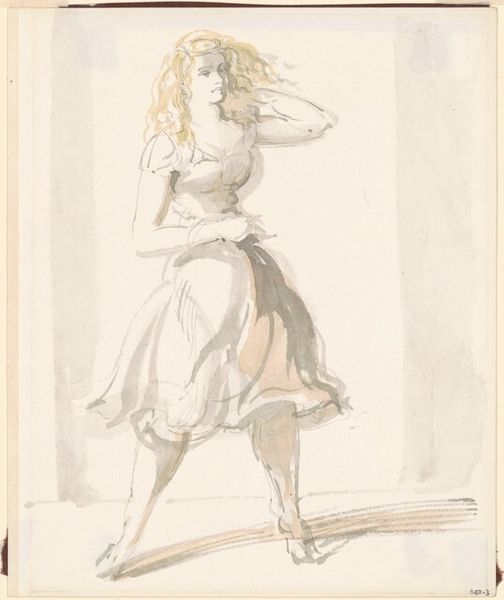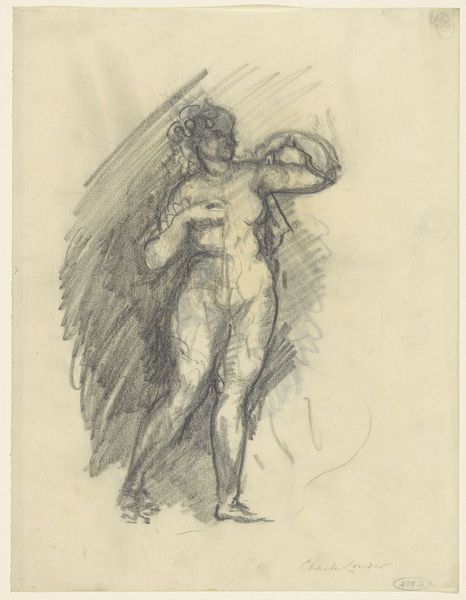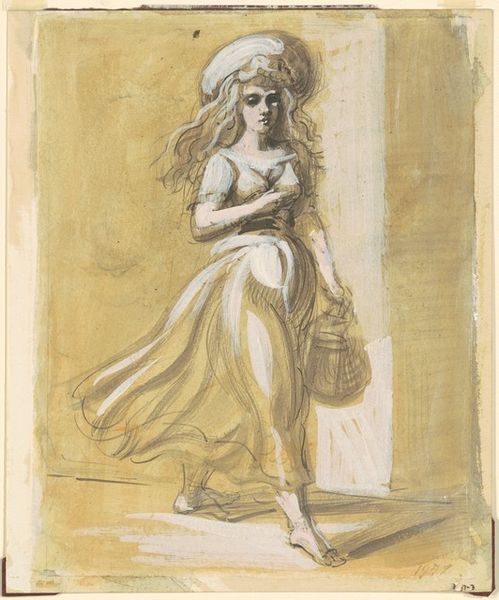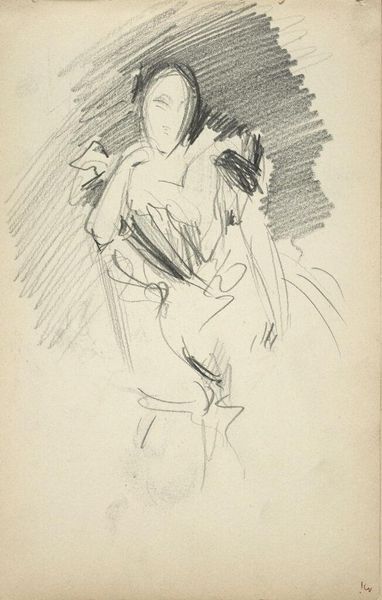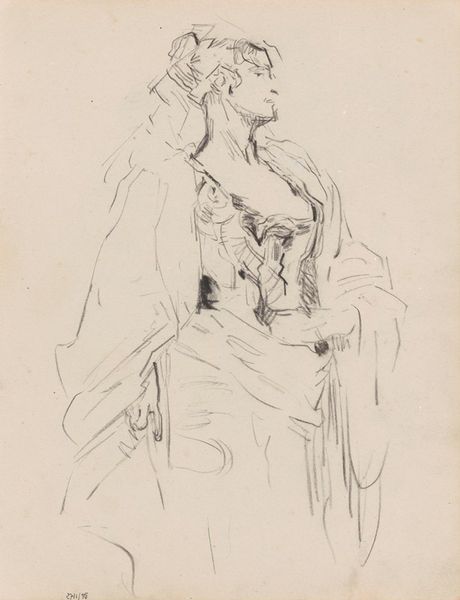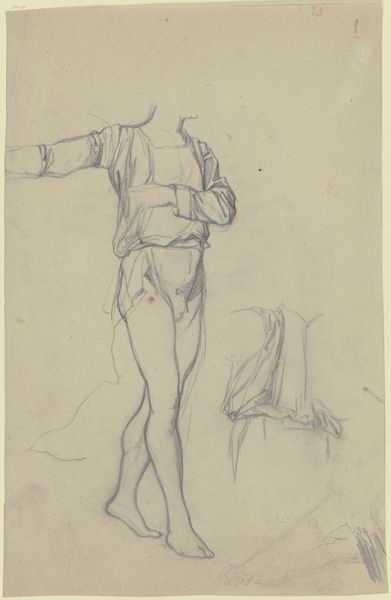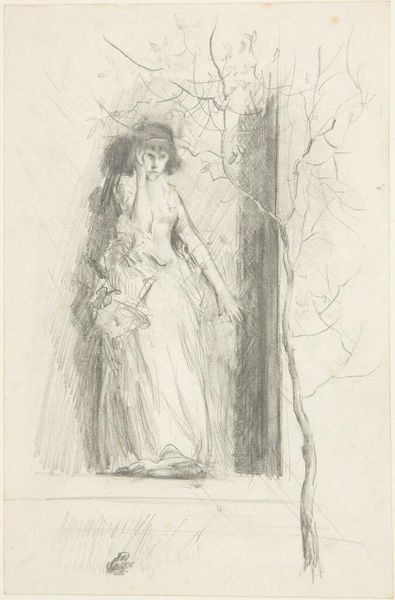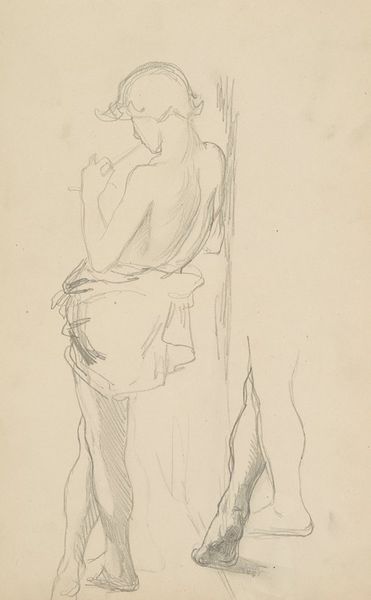
drawing, pencil
#
portrait
#
pencil drawn
#
drawing
#
pencil sketch
#
charcoal drawing
#
figuration
#
pencil drawing
#
pencil
#
pencil work
#
genre-painting
#
academic-art
#
realism
Dimensions: sheet: 31.75 × 24.77 cm (12 1/2 × 9 3/4 in.)
Copyright: National Gallery of Art: CC0 1.0
Curator: Let’s take a look at Reginald Marsh's "Girl Walking (Elevated)" from 1945, created using pencil on paper. Editor: It's striking! I immediately get a sense of urban life, movement, a bustling street corner perhaps? There’s a nervous energy in the lines; it makes me want to know her story. Curator: Marsh was known for capturing the vibrancy of New York City, often focusing on the everyday lives of women. This sketch provides an interesting look at representation in the mid-20th century, a perspective shaped by societal expectations and, arguably, a male gaze. We might even delve into feminist art criticism to unpack the layers. Editor: And considering the time period, 1945, at the tail end of World War II, does the "elevated" stance suggest a reclaiming of power, of space? Is it celebratory, or is she trying to literally rise above her social position? Curator: The sketch format feels immediate and intimate. There’s also a sense of theatricality. It almost captures the performer stepping out on a stage to be seen and objectified by its observers. It is as if it could offer a pointed critique of performative femininity, though without further evidence, it risks simply reifying it. Editor: Yes! The swift, almost impatient strokes capture a fleeting moment perfectly. We are positioned almost at her feet as observers. Her dress appears rather flouncy, and she’s carrying something, perhaps shopping from a day out. Does that have any impact regarding consumerism culture and feminine constructs? It definitely speaks volumes of its time! Curator: It invites us to examine the intersections of gender, class, and visibility within the historical and socio-cultural context of postwar America. Considering the war’s impact, how did these circumstances shift the landscape for women? What kinds of images were sanctioned in that climate? What images were not? Editor: Food for thought, indeed. This piece truly embodies Marsh’s observation skills, as it’s all very fascinating to contemplate. Curator: Absolutely, it sparks discussion about societal structures and female representation then and now, particularly through that lens. Editor: I leave here, thinking, walking, with the hope that Marsh will lead all to elevate the perspectives and empowerment of women today.
Comments
No comments
Be the first to comment and join the conversation on the ultimate creative platform.
